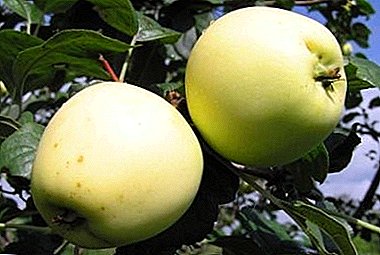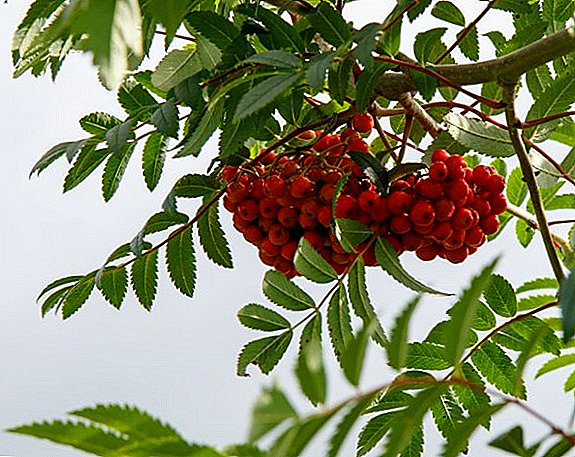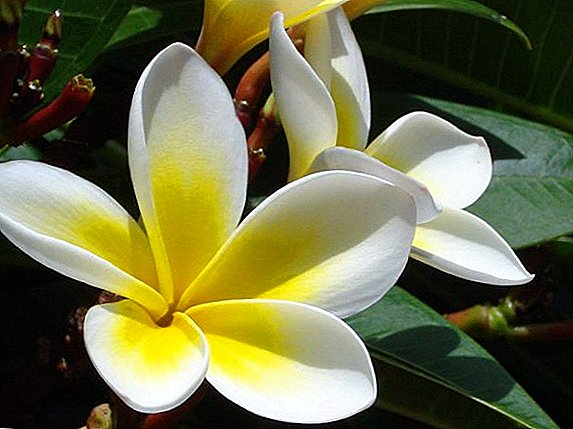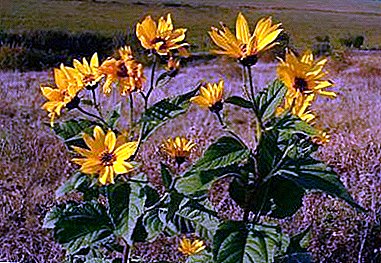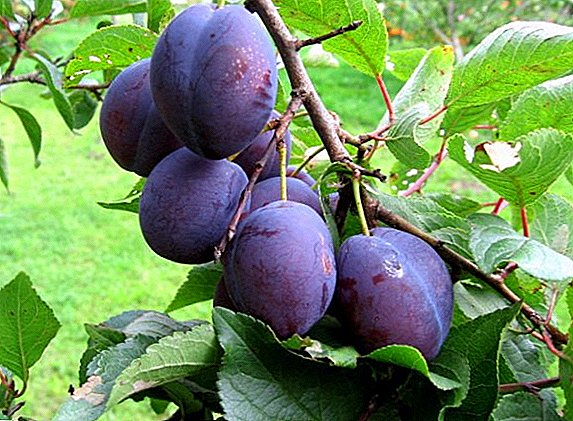 Everyone knows that many garden and garden plants are exposed to the harmful effects of microorganisms and various insect parasites. No exception and plum. If you do not know how to properly care for the plum in the spring, and do not take preventive measures or appropriate treatment, then the pests will not allow you to collect a decent crop of tasty berries.
Everyone knows that many garden and garden plants are exposed to the harmful effects of microorganisms and various insect parasites. No exception and plum. If you do not know how to properly care for the plum in the spring, and do not take preventive measures or appropriate treatment, then the pests will not allow you to collect a decent crop of tasty berries.
Hawthorn
 One of the pests of plums, which is a fairly large butterfly with white wings. An individual who has not yet hatched can be recognized without difficulty. The body of the caterpillar of the hawthorn is colored mostly gray and covered with many large hairs. The back is replete with three black and two brown stripes. Caterpillars hibernate in dry foliage, and in early spring they start eating swollen young buds. As a result, they are destroyed completely, and the plant does not bloom.
One of the pests of plums, which is a fairly large butterfly with white wings. An individual who has not yet hatched can be recognized without difficulty. The body of the caterpillar of the hawthorn is colored mostly gray and covered with many large hairs. The back is replete with three black and two brown stripes. Caterpillars hibernate in dry foliage, and in early spring they start eating swollen young buds. As a result, they are destroyed completely, and the plant does not bloom.
Control measures. There are many ways to destroy the hawthorn, but the simplest of all is the collection of nests arranged for wintering and their subsequent destruction. Another effective way of fighting is birds, which are best lured to your site. In the early morning in the summer, you can lay a film under the plum and shake the tree well. Since the caterpillars have not yet fully become active, they will simply crumble from the branches. They need to be immediately put together and burned.
As soon as the plum began to bloom, it should be sprayed with one of the insecticides: Nitrafen, Metaphos or Actellic.
Winter moth
This pest is widely distributed in gardens with non-chernozem grounds. The female of the winter moth is a large insect with a swollen abdomen, long legs and underdeveloped wings, as if atrophied. She can not fly, but quickly runs along the branches in search of a place for her laying. Males can fly. They have brown wings with a grayish tint and wavy transverse veins. The winter moth caterpillar reaches 3 cm in length, it has five pairs of legs and a brown head. A dark stripe runs along the back along the whole body, and on the sides there are three white strips. The name of the pest came precisely from the movement of the caterpillar spans: it tightens the end of the calf to the head, and then repels and crawls.
 Wintering of deposited yellow eggs with an orange tint occurs in cracks in the bark close to the kidneys. In early spring, the caterpillars hatch and bite into the kidneys, eating them from the inside. After that, they devour the buds, flowers and leaves, entangling them with cobwebs. In June, pupation of caterpillars occurs in the soil near a tree trunk. In the autumn, when the plum leaves fall, butterflies appear. Females lay eggs for the winter under the bark. They can be arranged in groups or individually.
Wintering of deposited yellow eggs with an orange tint occurs in cracks in the bark close to the kidneys. In early spring, the caterpillars hatch and bite into the kidneys, eating them from the inside. After that, they devour the buds, flowers and leaves, entangling them with cobwebs. In June, pupation of caterpillars occurs in the soil near a tree trunk. In the autumn, when the plum leaves fall, butterflies appear. Females lay eggs for the winter under the bark. They can be arranged in groups or individually.
Control measures. In the autumn, before the butterflies appear, you need to impose special trap belts made of corrugated paper. Pests are destroyed along with belts. Also, after bud break, trees can be treated with infusions of special herbs. When the weather is warm outside, the treatment of trees with Bitoxibacillin and Lepidocide helps in the period of bud break.
Did you know? "Home "is the most popular plum variety in the world. The tree grows up to 12 meters in height and has a wide spreading crown. Among all the plantings of plum trees, home plum is 90%.
Pliers
Ticks are an absolutely unknown caste of organisms for many gardeners and gardeners. They do not belong to the class of insects, therefore, choosing plant protection products, be sure to consider this fact. Ticks are one of the most ancient representatives of microorganisms ever living on Earth. To date, there are more than 50,000 species.
Red fruit mite
 It is a microorganism with a size of 0.5 mm of a red-brown color. A female tick can lay up to one hundred eggs in its lifetime. During the summer period, the red tick can produce up to eight generations of offspring. Summer egg laying takes place along the veins of the leaf from its reverse side. At the end of autumn females lay eggs on young shoots. Winter eggs are transferred to the surface of the bark. After hibernation before flowering, the plums from the eggs hatch the larvae, which, passing through the stage of the nymph, become adult individuals. A week later, ticks are ready to breed.
It is a microorganism with a size of 0.5 mm of a red-brown color. A female tick can lay up to one hundred eggs in its lifetime. During the summer period, the red tick can produce up to eight generations of offspring. Summer egg laying takes place along the veins of the leaf from its reverse side. At the end of autumn females lay eggs on young shoots. Winter eggs are transferred to the surface of the bark. After hibernation before flowering, the plums from the eggs hatch the larvae, which, passing through the stage of the nymph, become adult individuals. A week later, ticks are ready to breed.
Red fruit mites suck the juices from the leaves, after which they dry out and fall off. Fruits shrivel and do not grow to the desired size. If the infection has become very large-scale, then you can lose up to 30% of the total yield of plums.
Control measures. To combat these arthropods, pyrethroid preparations are not suitable. At the time of larvae hatching, the following insectoacaricides are used: "Fufanon", "Danadim", "Fitoverm" and others. When the mass infection has reached a critical point, then it is necessary to use highly targeted drugs: "Sunmite", "Neoron", "Nissoran", "Apollo" and others.
Common Spider Mite
 This is a polymorphic parasite that can damage a plant in closed and open ground. In size it can reach 0.6 mm. In summer, the color of the pest is greenish-yellow; by spring it becomes red-orange. Its nutrition and reproduction occurs on the underside of the leaves under a veil of thin cobwebs. On it is his movement, there he is hiding.
This is a polymorphic parasite that can damage a plant in closed and open ground. In size it can reach 0.6 mm. In summer, the color of the pest is greenish-yellow; by spring it becomes red-orange. Its nutrition and reproduction occurs on the underside of the leaves under a veil of thin cobwebs. On it is his movement, there he is hiding.
When the defeat of the spider mite becomes massive, the web can be pulled even between the nearby branches of the plum tree. They can even be completely covered with cobwebs. At the tips of the shoots and leaves an accumulation of a moving mass of pests is formed. The activity of spider mites can be detected by small black points of the fecal mass.
In the first periods, damage occurs to all the leaves, after the bulk of the pests rise to the upper tier and damage not only the leaves, but also flowers with fruits.
Methods of struggle. During the growing season, the plum must be sprayed with "Aktellik", "Altyn", "Antikleschom" and other similar preparations. If you are late with the treatment, the females will have time to lay new eggs and increase their numbers. Treatments of any type should be carried out immediately after the detection of spider mite populations. The tick web has a water repellent property. The later the treatment will be carried out, it will be more difficult to achieve positive results even with high doses of the drug.
Acacia spatula
 This insect injures plum trees especially hard. The body of an adult female has a reddish-brown color. Its length is 6 mm and its width is 5 mm. The little body is rounded oval, along the edges it is gentle. Males have a thinner and oblong body. Their head is black with six eyes, the antennae and legs are yellow, the belly and chest are brown and covered with white powdered wax. On the abdomen are two long threads.
This insect injures plum trees especially hard. The body of an adult female has a reddish-brown color. Its length is 6 mm and its width is 5 mm. The little body is rounded oval, along the edges it is gentle. Males have a thinner and oblong body. Their head is black with six eyes, the antennae and legs are yellow, the belly and chest are brown and covered with white powdered wax. On the abdomen are two long threads.
Trees are greatly weakened after the attack of the acacia false guard because it sucks out all the nutrients and dissolves the plant tissue with its toxic saliva. Subsequently, the bark of the tree is destroyed and dies down to the wood. Plums eaten by shading, lose not only the attractiveness of appearance, but also the taste. Young trees, to which no measures are being taken to eliminate the pest, die within two years.
Control measures. Check the seedlings when planting, because the acacia false guard is distributed along with the seedlings and inoculum materials. Clean trunks from dead bark and remove dry branches. If the case is too neglected, then the tree should be uprooted and burned. The pest control of plums by spraying is carried out in a dormant period until the bud break. Processing should be carried out with contact-acting insecticides and preparations based on mineral oil.
Important! Processing must be carried out very carefully, washing the skeletal branches and stem, because they can be completely covered with small shields of parasites.Re-treatment with insecticides carried out in the period of resettlement of creeping larvae. You can also supplement the treatment of other types of pests.
Listovertka rosany
 These are small butterflies with a wingspan of up to 25 mm. The caterpillars of the grassworms eat the foliage, as a result of which it collapses, acquiring an unnatural shape. Caterpillars grow to 20 mm, and their color can vary from green to brown.
These are small butterflies with a wingspan of up to 25 mm. The caterpillars of the grassworms eat the foliage, as a result of which it collapses, acquiring an unnatural shape. Caterpillars grow to 20 mm, and their color can vary from green to brown.
Control measures. It is necessary to begin the destruction of the leaflets before the plum blossoms. If wintering caterpillars predominantly live on trees, then spraying of insecticides should be carried out in the budding phase. If the shepherds overwinter at the egg stage, the treatment should be carried out in spring at a temperature not lower than 10 ° C. It's easier to get on the tracks, because in cold weather, they hide under the cobwebs or twisted leaves.
Important! Summertime processing of plums from the grassworms will have a significantly smaller effect. Moreover, all beneficial insects and predatory mites will also suffer from insecticides.Before plum blossom, treatment is best done with the following insecticides: "Atom", "Ditoks", "Di-68", "Binom", "Bi-58 New", "Rogor-S", "Terradim", "Landing", "Tagore", "Tod", "Zolon" , "Fufanon". You can use the drugs "Avant", "Lannat 20 L", "Aktellik", "Calypso", "Sumition", "Samurai Super", "Sumidge", "Coragen" and others.
If the caterpillars have already fallen into flower buds and twisted leaves, then it’s time to introduce pyrethroids, for example, Ivanhoe, AltAlf, Accord, Alfatsin, Alfashans, Tsi-Alpha, Fatrin, Fastak. The following drugs can also be used: Karate Zeon, Altyn, Lambda-S, Kungfu, Break, Sensei, Gladiator, Karachar, Samum, Lyambdeks.
Important! Remember that pyrethroids activate tick reproduction. And in the summer at a temperature of 25 ° C, their effectiveness is almost reduced to nothing.In summer and after plum blossom, it is better not to use insecticides with a high concentration of toxicity. It is better to use drugs based on the bacterial component, for example, Fitoverm and Akarin.
Sawfly
These are exclusively herbivorous insects, which breed at times and in great quantities. Sawmills destroy many crops and man-grown trees, including plums.
Plum black sawfly
 Adult insect is pearly black in color up to 0.5 cm in length with yellow limbs and transparent wings. The larvae of the black sawfly are greenish-white with a brown head and twenty legs. They carry the winter in the soil to a depth of 10 cm. In the spring they pupate. Adult individuals appear a week before plum blossom, and at first they lay eggs in buds. One female can inhabit up to 30 buds. The larvae hatch during the formation of fruit ovaries. They eat them away and damage the seeds. Each larva can damage up to six fruits per month. Wintering the larvae go to the ground near the tree.
Adult insect is pearly black in color up to 0.5 cm in length with yellow limbs and transparent wings. The larvae of the black sawfly are greenish-white with a brown head and twenty legs. They carry the winter in the soil to a depth of 10 cm. In the spring they pupate. Adult individuals appear a week before plum blossom, and at first they lay eggs in buds. One female can inhabit up to 30 buds. The larvae hatch during the formation of fruit ovaries. They eat them away and damage the seeds. Each larva can damage up to six fruits per month. Wintering the larvae go to the ground near the tree.
Most damage can be observed during wet warm periods. Eaten by the larvae fruits begin to crumble in the late spring - early summer. If the number of pests reaches a critical point, then the plums can lose up to 95% of their yield. Another sign of plum damage by the black sawfly is a round hole in the fruit, through which dark brown discharges and dust with the characteristic smell of bedbugs can be seen.
Control measures. Black plum sawfly dies from the "Intavira" and "Iskra". It is enough to spray the crowns of trees in the proportion of one tablet per bucket of water. Damaged fruits should be shaken and destroyed along with the pests that are inside. In the autumn you need to dig up the soil under the tree.
Did you know? The English Queen Elizabeth II eats two plums every day on an empty stomach, after which she goes to breakfast. She eats only those fruits that grow in the royal garden. This is a variety with the proud name "Brompkon".
Stone yellow sawfly
 These are half-centimeter yellow pests. Adults live in spiderweb nesting places among tree foliage. Pupation occurs in the ground under a tree. They are as dangerous as their black tribesmen. Statistics says that one yellow sawfire is able to spoil up to six fruits in its life. A massive attack of these pests can destroy up to 80% of the crop of plums. Moreover, only the best trees are affected.
These are half-centimeter yellow pests. Adults live in spiderweb nesting places among tree foliage. Pupation occurs in the ground under a tree. They are as dangerous as their black tribesmen. Statistics says that one yellow sawfire is able to spoil up to six fruits in its life. A massive attack of these pests can destroy up to 80% of the crop of plums. Moreover, only the best trees are affected.
Control measures. Irrigation of trees should be carried out zonal in those places where the accumulation of insects is greatest. The best remedy for yellow plum sawfly is Metaphos. You can also use a ten percent "karbofos" and benzophosphate. The first pollination by insecticides against pests is carried out a couple of days before the start of flowering. Well cope with the task of "Rogor", "Gardona", "Tsidial." Repeated processing of plums from pests will be aimed at the destruction of the larvae when the petals have already crumbled. Means that are recommended to use - it "Tarzan", "Insegar", "Novaktion".
In the third treatment applied "Metaphos" or "Phosphamide". It is only necessary to calculate the treatment in such a way that the harvest is carried out no earlier than a month after the destruction of the insects.
Did you know? Next to the plums can not be planted tobacco, potatoes, tomatoes, eggplant and other nightshade, as they lure fungal microorganisms.
Gypsy moth
 This pest affects not only the plum, but also other fruit bearing cultures, being a multi-eating insect. Unlike other, less noticeable parasites, these caterpillars reach a length of eight centimeters. A distinctive feature is a kind of warts on the back of the pest. Gypsy moth nibbles leaves. Eggs are laid on the skeletal branches and walls of homestead structures.
This pest affects not only the plum, but also other fruit bearing cultures, being a multi-eating insect. Unlike other, less noticeable parasites, these caterpillars reach a length of eight centimeters. A distinctive feature is a kind of warts on the back of the pest. Gypsy moth nibbles leaves. Eggs are laid on the skeletal branches and walls of homestead structures.
Control measures. Carefully inspect the intended location of the tracks and remove the egg masonry with a knife. Before and after flowering, the plum must be treated with Inta-Vir.
Plum moth
The wormy fruits of plum trees unequivocally indicate that they are damaged by this pest. The adult plum moth is a butterfly, whose wrecking activity comes at the end of April. She usually lays eggs in the evening at + 16 ° C. Crawling caterpillars take root in the fruits that they become food and home. Such plums disappear even before their full ripening. Plums, eaten moth, covered with a small amount of gum.
 Methods of struggle. First of all, the fallen fruits are gathered, trap pods are applied and the soil is dug around the trees. Processing is done by "Aktar" and "Confidor". It is also worth highlighting such biological agents as Bitoxibacillin or Lepidotsid. You can also personally prepare a decoction of bitter wormwood.
Methods of struggle. First of all, the fallen fruits are gathered, trap pods are applied and the soil is dug around the trees. Processing is done by "Aktar" and "Confidor". It is also worth highlighting such biological agents as Bitoxibacillin or Lepidotsid. You can also personally prepare a decoction of bitter wormwood.
Aphid
This is a garden and garden pest that feeds on sap from plant tissues. Thus irreparable damage to the plant is done: its growth and development are inhibited, the flowers fall off, the quality of the fruits deteriorates. For this, aphid never fell in love with gardeners, who are constantly looking for the most effective methods of dealing with it.
Plum pollinated aphid
This pest affects almost the entire tree completely. After the lower part of the foliage has been damaged, it collapses and then dries quickly. As for fruits, they shrivel, rot and fall away. Tree branches are bent and the whole plant weakens. In addition, the bodily fluid secreted by aphids, contributes to the emergence and development of soot fungus.
 Control measures. Before you begin to fight pests of plums, a number of preventive measures should be taken in the spring. First of all, it is necessary to remove all the young shoots formed around the roots. Also in March you need to spray the plum trees with Nitrafen. When buds are dissolved, they must be treated with tincture of tobacco, combined with a solution of laundry soap. The trunk itself and pristvolnye branches need to coat with insect glue.
Control measures. Before you begin to fight pests of plums, a number of preventive measures should be taken in the spring. First of all, it is necessary to remove all the young shoots formed around the roots. Also in March you need to spray the plum trees with Nitrafen. When buds are dissolved, they must be treated with tincture of tobacco, combined with a solution of laundry soap. The trunk itself and pristvolnye branches need to coat with insect glue.
Hop aphid
Females of this insect reach a length of up to 2.5 mm and have an oval yellow-green body. On the sides and abdomen are clear dark stripes. The eyes of the insect are red-brown. The larvae have a paler color.
Control measures. During periods when the foliage has an average of 10 aphids, you can use Bitoxibacillin. Protecting plums from pests with this tool prevents the appearance of not only aphids, but also multi-tier scoops and stem moths. Excellent means - "Bi-58", "Karate", "Siren" and "Dursban".
Important! After plum blossom, the concentration of pests increases by 300%. So do not neglect preventive measures.
Plum cobweed
 This is a black pest with yellow paws. Larvae reach half centimeter length. The female lays her eggs inside the still unformed plum fruit. And in the plums that have already fallen, the wintering of the larvae occurs. The plum tree-eaters hit the trees so much that by the middle of summer there is a massive fall of the fruits.
This is a black pest with yellow paws. Larvae reach half centimeter length. The female lays her eggs inside the still unformed plum fruit. And in the plums that have already fallen, the wintering of the larvae occurs. The plum tree-eaters hit the trees so much that by the middle of summer there is a massive fall of the fruits.
Methods of struggle. Fallen fruits must be harvested and buried to a depth of at least half a meter. After the start of the pest's peak activity, the trees should be sprayed with the insecticide Insegar. This occurs a decade after the flowering of the plant.
Did you know? Plum in China - a symbol of winter.Five petals of its flower symbolically mean peace, joy, luck, longevity and prosperity.
May Western Hrusch
 The larvae of this polymorphid pest infect the roots of young plum trees. Adult individuals are fairly large beetles, reaching up to three centimeters in size. Elytras are colored reddish brown with black edging. On the abdomen there is a conical ligidium, which is elongated and bent down. In large numbers, the Mayr Khrushchev is dangerous both in adult form and in the form of larvae. Young plants, damaged by the latter, wither, linger in growth and die. Adult individuals gnaw the leaves of plum trees.
The larvae of this polymorphid pest infect the roots of young plum trees. Adult individuals are fairly large beetles, reaching up to three centimeters in size. Elytras are colored reddish brown with black edging. On the abdomen there is a conical ligidium, which is elongated and bent down. In large numbers, the Mayr Khrushchev is dangerous both in adult form and in the form of larvae. Young plants, damaged by the latter, wither, linger in growth and die. Adult individuals gnaw the leaves of plum trees.
Control measures. The easiest way to destroy the larvae of Khrushchev is their manual collection and further destruction. With the mass reproduction of the May beetles, you can shake off the film, spread out under the crown of a tree, and destroy. This should be done in the early morning, while the beetles are still in a sluggish state.
Pest preventive measures
The irrefutable fact that strong and healthy trees recover better from the harmful effects of pests than weakened ones. Hence the conclusion that we should not immediately take up "heavy artillery", exposing the plant to stress, but simply strengthen it. High agrotechnical properties contribute to the excellent growth and development of not only plum trees, but also other plants.
First, it is necessary to minimize the risk of infecting a plant before it is planted in the ground. For this, seedlings should be purchased only in proven nurseries and shops. It is important to acquire varieties that are most resistant to the detrimental effects of the pests prevailing in your area. Increases the resistance of plants to pests a certain composition and concentration of nutrients. Potash-phosphorus fertilizers are well suited, but an excess of nitrogenous substances, on the contrary, reduces the immunity of trees and reduces the shelf life of harvested fruits. Organic fertilizers also only improve the living conditions of the pests living in the soil.
 Tillage around trees in the spring, together with the simultaneous application of fertilizers contributes to their protection against various pests. Digging up the soil, you prevent creeping wintering parasites to the surface.
Tillage around trees in the spring, together with the simultaneous application of fertilizers contributes to their protection against various pests. Digging up the soil, you prevent creeping wintering parasites to the surface.
Pruning and the formation of tree crowns involves the removal of affected pests of shoots, leaves and branches with their subsequent removal. This is a very effective measure that rejuvenates the plant and gives it strength and health. Together with pruning, you can clear the layer of the old bark. Along with it, plum pests inhabiting them are also being destroyed.
But there is a reasonable question about the use of drugs against diseases. All of the above methods are clearly inferior in their effectiveness to chemical processing. In this case, do not be afraid to use prophylactic drugs intended against a certain type of pests.
Important! You should not overdo it with the use of chemicals against pests, especially if they are not observed on the tree. Especially, if last year the garden was also healthy. It will be superfluous to be guided by the thoughts "let it be just in case."Every year there are drugs that are most modified in the direction of efficacy and safety. But do not forget that there are always proven pest control substances. Trees should also be treated with caution with preparations, though effective, but highly containing substances harmful to humans. These include Nitrafen, Karbofos and Polycarbacin.


